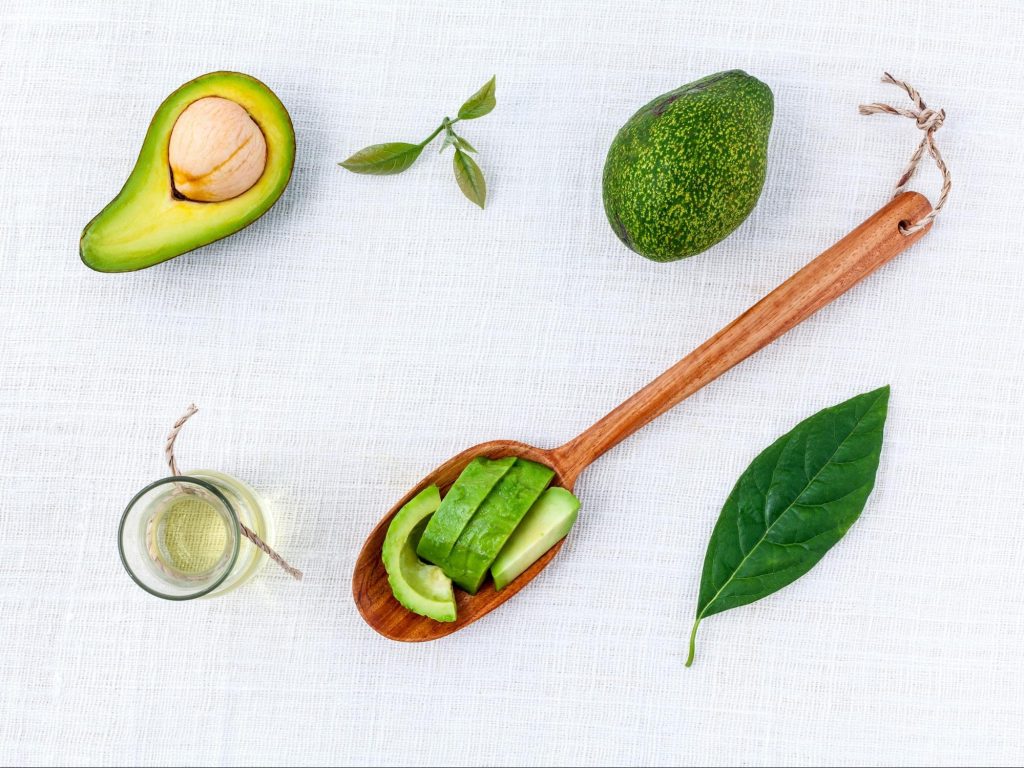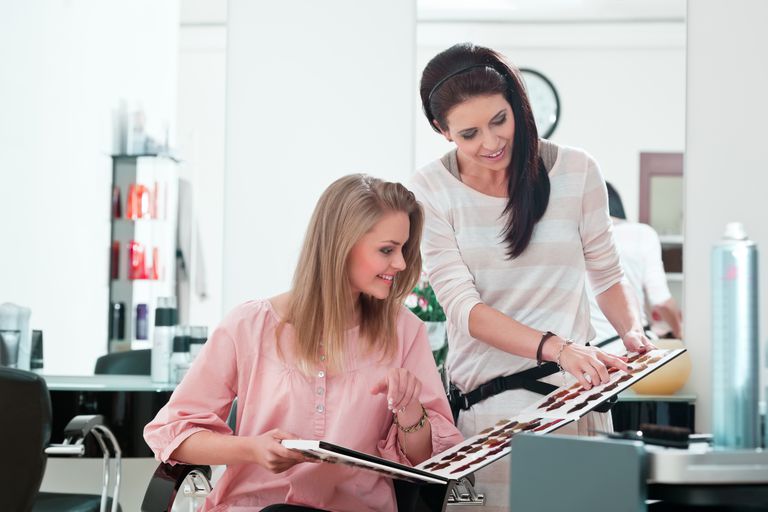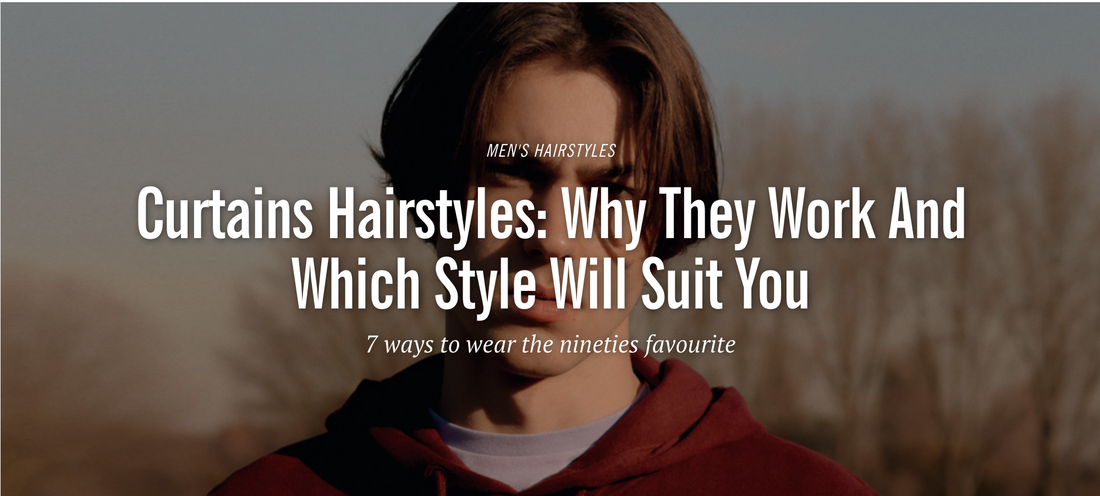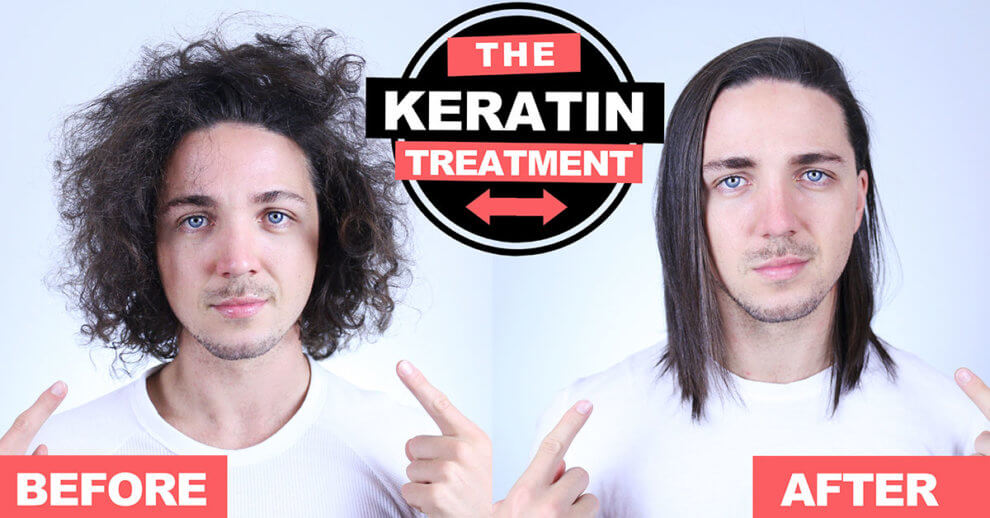|
1/27/2019 0 Comments 5 Hair Masks You Can Make at HomeJoey, an editor at Jen Reviews, stumbled across my blog while doing research on hair masks. They had just published a detailed article with 5 hair masks you can make at home. I have it for you below. Hair masks can be done at home with simple ingredients.
Hair masks are often brushed aside as just another product companies try to sell you. After all, shouldn’t the right shampoo and conditioner be enough? But then why is it that every so often you find split ends just a mere month after visiting the hair salon? Extreme temperatures are often to blame. Heat from styling tools, chemicals from hair coloring all play a part in damaging your hair. And now that summer is here, the heat from the sun is another thing to worry about. Sunbathing on the beach or by the pool without a hat is extremely harsh on your hair and within a few days of sun you will start noticing the damaging effects. Unfortunately, we seem to often skip the hair mask because we do not deem it worthy of buying. Finishing the whole tub is a real challenge and buying an already expensive product to be used just a few times seems like a waste. Luckily, you can save yourself a trip to the store and some cash by simply looking into your kitchen cabinet for all-natural ingredients to make your own homemade mask. Here are 5 great hair masks to make at home:
Making hair masks part of your routine is a good idea, even if your hair doesn’t look damaged yet. Preventing the damage is always better than repairing the damage after the fact. Some people choose to sleep with the hair mask overnight and if you choose to do so, do make sure you wear a shower cap to not get the products all over your pillow. With every hair mask mentioned above, I saw improvements in my hair the very next day. It looked healthier, bouncier and the dryness was gone. Test out each mask to see which one is right for you, as not all hair is created equal. You can find their article with illustrative photos here: https://www.jenreviews.com/hair-masks/
0 Comments
1/20/2019 Hair Color 101Have you ever heard your hairdresser talking about your hair color and wondered what planet she was living on? It's not just you: Hair color can be confusing. Color names geared for the consumer are rather artful and subject to interpretation (think "cafe au lait"). Technical color designations, on the other hand, typically consist of numbers and letters that describe nuances about the color in a language only your hairstylist seems to understand.
Here, we dissect the very basics of hair color, what your hairdresser knows, and how you can be more informed when speaking to your stylist or choosing your next color. What Hair Color Is—and Isn't First, let's define hair color. Basically, it's a formulation of pigments and chemicals designed to enhance or change your hair's color. Don't call it "dye," though.Those in the beauty industry never refer to hair color as "hair dye." As beauty school instructors tell their students, "You dye an Easter egg; you don't dye hair." Defined as your hairstylist communicates it, the term hair color refers to the combined level and tone of a person's hair. These are two distinct elements, and they're crucial for you to understand to get the hair color results that best match your desires. Hair Color Level The "level" of a hair color is its relative lightness or darkness.All hair colors have levels, whether you're talking about your natural color or choosing a new one. Standard hair color levels are defined on a scale of 1 to 10, with level 1 being the darkest, blackest color and level 10 being a very light blond color. The scale is understood throughout the beauty industry and is used across brands and formulations. Here are the 10 standard hair color levels:
In addition, the very lightest platinum-blond colors are often referred to as level 11, 12, or even 13. Hair Color Tone After establishing the level of your natural or desired hair color, you'll next have to figure out its tone. Hair color tones generally fall into three standard categories: warm, cool, and neutral. When hairstylists discuss color, or if you are choosing a color from a swatch book, the tones are often indicated with a letter. Here are examples of standard color tones: Cool Tones
Warm Tones
Neutral Tone
Tones are often combined in hair color formulas to create the perfect shade. For example, an auburn color is achieved by combining neutral or warm tones with red tones. Red hair color can be made cool by adding violet tones to the color formula. Sometimes, hair colorists achieve the right color combination by mixing different color tones together; they receive training in school or through color manufacturers in creating these custom combinations. Hair color companies typically offer colors that feature ready-mixed tones, as well. Combining Level and Tone A hair color's technical name is a letter-number combination that denotes its level and tone. For example, a warm brown color would be defined as a "7W." The number indicates the hair color level (dark blond), and the letter indicates that the tone is warm. Here are a few other examples of hair color as defined by level and tone:
Determining Hair Color Level and Tone Figuring out a hair color level is pretty simple once you get the hang of it. Your opinion might be a level off from the next person's opinion, but generally speaking, the level is fairly obvious. Hair color tone, however, is not as easily defined by the eye. What one person may see as "red" the next person may describe as "copper." This is where pictures and swatches come in handy to ensure that everyone is speaking the same language. The most important thing to remember when discussing hair color with your stylist is that hair color is not flat (or, at least, it shouldn't be). It's a complex interplay of depth and temperature that can enhance or detract from your skin color and features. Communicating with her using the terms "level" and "tone" helps her understand what you want. Likewise, understanding the two will help you choose wisely from the rows and rows of colors at the store if you go the do-it-yourself route. This article is from Live About Every decade has a signature haircut. The fifties had a neat short, back and sides, the seventies had long hair and sideburns, the eighties had mullets. In the nineties, it was all about curtains. Worn by everyone from David Beckham and Brad Pitt to countless boyband members and that guy from Dawson’s Creek, it was the style for would-be heartthrobs and a generation of men getting more and more comfortable with the idea of grooming. The curtains hairstyle – should you have missed it or forgotten – is a style where hair on the top of the head is grown into a fringe and defined by a strong middle parting along the centre. It’s floppy, it’s quite high maintenance and it’s very much back. A quick glance at the spring collections from any number of brands will confirm the nineties fashion revival is still going strong, and with it is the haircut that defined the decade. But it wouldn’t be the first comeback, because the history of curtains goes back a lot further than the turn of this century. “It was a hugely popular haircut with men at the end of the 19th century,” explains Jos Gibson, principal at the Sassoon Academy, “with famous icons like the writer Oscar Wilde and artist Aubrey Beardsley sporting the look. The trend continues among working-class men until the end of the 1920s, and then returns briefly when hippie culture spreads from America in the 1960s.” The 1990s revival came with the rise of grunge and home-grown indie bands. Happy Mondays frontman Shaun Ryder, Placebo singer Brian Molko and Blur bassist Alex James were notable champions of curtains. Then the boy bands took over; Take That wore them (apart from Gary who was still in his awkward phase) and Westlife, along with every teen TV star (see Jared Leto, straight out of the test tube, in My So-Called Life) and the look subsequently filtered down to the teenagers and beyond. How To Wear Curtains Today Back in the nineties, this cut looked best on people with poker straight fine hair. This type of hair emphasises the strong parting that defined the look but not everyone had the right kind of hair or cut (see Olly Murs). It didn’t stop them and neither should it stop you, because modern curtains have evolved. In fact, that floppy look with a rigid parting didn’t really do anyone any favours and now, a bit of texture is your friend. “The look can be updated by making it more personalised to you,” says Gibson. “It tends to suit narrower, boyish face shapes but can be undercut to make it look slimmer on the face. Essentially this haircut works best on someone with a natural middle or offset parting.” The hidden bonus of our recent love affair with quiff haircuts means that some of us probably have some length left at the top. Simply stop slicking it back and let it flop apart and voilà – you’ve got the foundations for curtains. What To Ask For First, identify your favourite curtains role model (see below) and ask yourself if you have similar hair types. There’s not much point adopting a style if it doesn’t work for your hair. It just means more hassle and time spent styling it (unless you want to embrace a more radical option like an undercut or permanent relaxing treatment which can make hitherto impossible looks achievable) “If your hair is curly or wavy it might be better to go for a slightly longer version to avoid getting a really thatched look,” advises Gibson. The thatch he refers to happens when very thick hair is given a wedge shape underneath or isn’t styled properly on top. There’s a case here for an undercut if you want the look but your hair is super thick. “With straighter hair it’s probably best to ask your stylist to keep the length at the cheekbones,” says Gibson, “as this will frame the face.” You can leave it long and layered at the back, or take the lengths to just above the ears and keep it tight at the sides for a classic look. How To Style It For anyone currently shuddering at the memory of frizzy thatch-like curtains, take heart from the fact that today’s styling products are about million times better than they were back then, when salt sprays, matt wax, hair oils and straightening irons didn’t exist. In fact, in the nineties there wasn’t much apart from wet look gel, crunchy mousse and hair spray on the go. For anyone currently shuddering at the memory of frizzy thatch-like curtains, take heart from the fact that today’s styling products are about million times better than they were back then, when salt sprays, matt wax, hair oils and straightening irons didn’t exist. In fact, in the nineties there wasn’t much apart from wet look gel, crunchy mousse and hair spray on the go. Men with curly hair especially had it rough, says Gibson, who recommends “leaving curly and wavy hair to dry naturally and using a generous amount of Illuminating Oil by Sassoon Professional or Sassoon Curl Form to get that grungy lived-in look.” We’ve talked about co-washing before (forgoing the shampoo every other day to wash with conditioner instead) and it can help dial down the frizz and give curls definition. For straight hair it’s easiest to take it polished: “Use less product and dry downwards and forwards using a vent brush to keep the follicles flat and to stop flyaway hairs,” says Gibson. Visit your barber as often as you normally would, even if you’re growing it out. And never, ever use gel – or risk looking like Peter Andre. Click on this article from FASHIONBEANS and scroll down for
7 ways to wear the nineties favourite under The Best Celebrity Curtains Hairstyles I found this article on The Longhairs blog, a site I've mentioned before. -------------------------------------------------------------------------------------- I’ve got 2 questions for you: Q1. Do you struggle with curly/frizzy or damaged hair? Q2. Have you ever heard of a keratin treatment? If you said yes to question 1 and no to question 2 then you’re definitely going to want to see this. We recruited our boy Thomas In Action to shed some extra light on how getting a keratin treatment can dramatically decrease your day to day battles with unruly curls and frizz. Wouldn’t that be nice? Frizzbuster: Keratin Treatments For Men Need a solution for your frizzy curls? Perfect, in this post I’m going to cover why keratin treatments are one of the best long-term solutions for guys struggling with curly, frizzy hair. Firstly, frizzy hair is a pain in the ass. Secondly, a keratin treatment is my “AK-47” for dealing with it. A keratin treatment provides ultimate control over unruly hair and can save you from long, time-consuming hair routines every day. Why Does Hair Get Frizzy? Understanding frizzy hair is the first step to finding the best solution. In short, frizzy hair is caused from the amount of open space between your hair cuticles. If you’re wondering what cuticles are, they are microscopic fish-like scales that sit on the outside surface of the hair shaft and behave in a similar fashion to the pores on your skin. The proper term for the space between your cuticles is called “porosity,” and depending on the conditions of the air and the natural porosity of your hair, your cuticles can open wider and shut tighter. Some guys naturally have lower porosity and experience minimal or no frizz, whilst other guys, particularly with curly hair, may experience unpleasant poof and frightfully frizzy conditions. Understanding your hair type and where you are on the porosity chart is key when choosing a solution for your hair. In the next section I’ll explain how a keratin treatment can help guys who have curly hair and identify on the higher end of the porosity scale. How Does a Keratin Treatment Fight Frizz? A keratin treatment, made from same protein as your hair, is an in-salon procedure designed to close your cuticles and reduce porosity for an extended period. Much like hair ties, these hair treatments are not well-marketed to men, usually labelled as a “beauty product.” In fact, both men and women can benefit from this type of treatment. I recently did a post on my YouTube channel demonstrating how a keratin treatment worked on my frizzy curls and what to expect when getting a treatment. You can also find more useful information about keratin treatments on my blog to get more familiar with what this kind of treatment can do. Are Keratin Treatments Permanent? No, keratin treatments are not permanent and do not straighten your hair. It’s a common misconception for people to think keratin treatments work the same as a chemical straighten because they both give the hair a significantly more relaxed look. The main difference between these two treatments is: a) Chemical straightening psychically breaks the structural bonds of your hair. This permanently disables your curl pattern and leaves your hair vulnerable to breakage. This treatment is also irreversible so you need to think carefully before deciding on something like this. b) A Keratin treatment lightly coats the structural bonds of your hair, giving them a smooth, relaxed look. Instead of losing your curl altogether, it becomes looser and frizz-free, making it far more manageable every day. This treatment typically can last anywhere from two-four months, depending on how you care for it. When I got my first keratin treatment, I was given 3 different options. I was able to have the treatment on for either 30 minutes, 45 minutes or 1 hour. Each time length was going to give me a different result in terms of how relaxed I wanted my curls to look. The longer I had the treatment on, the more relaxed and frizz-free my hair would turn out. I ended up choosing the 45 minute option as I still wanted a curly appearance but really wanted a frizz-free result. You’ll see at the end of my video above, I revealed my new relaxed curl pattern two days after the treatment and was pretty stoked with my results. Since my first treatment I’ve been getting one every three months to keep my maintenance low and feeling awesome. #wouldreccommend How Much Are Keratin Treatments? Keratin treatments can cost anywhere from $200 - $350 in the USA depending on how much hair you have. Some may consider this to be rather expensive, however, it depends on how you value time. If you spend a lot of time trying to tame your curls and reduce frizz on a daily basis, you may find a keratin treatment more beneficial in the long run. For me personally, getting a keratin treatment allowed me to stop fluffing around so much with my hair in the morning and focus more on my business and the content I want to make. Plus it made the act of just doing my hair more enjoyable, which seems to be the biggest problem when dealing with frizz. Where Can You Get A Keratin Treatment? Well, if you’re in San Diego, The Longhairs always recommend House of Imago. If you’re elsewhere, most professional salons offer keratin treatments. Ask your trusted hair pro—here are some tips on how to confidently navigate your visit to the salon. Shut The Front Door On Frizz At the end of the day, picking the right solution to deal with your frizzy hair is entirely up to you. I feel it’s also got a lot to do with how your hair makes you feel. Personally, when I have a frizzy hair day, my confidence sinks. That’s why I deem this type of thing worthy as it’s helped me manage my hair FAR easier and my bad hair days have reduced enormously. This type of treatment can also work guys who struggle with minimal frizz. Before writing this post, I was talking to El Rubio about my love for keratin treatments and he mentioned that he gets one twice a year. And he doesn’t even have curly hair! If you have any questions regarding keratin treatments or need advice on curly hair, please swing by my channel and say hi or leave a comment. I hope you found this post somewhat helpful and would love to hear about your experience if you choose to get a keratin treatment. Keep rocking that mane! Yours in good hair, T.I.A. Thomas in Action 1/13/2019 0 Comments Have you discovered Invisibobbles?Have your Invisibobble hair elastics stretched out? Have you been throwing out your Invisibobble hair elastics because you didn’t know you can fix them? These plastic coil elastics are amazing for holding up your hair, even thick or curly hair. The best part is they don’t leave a mark when you take your hair out. Invisibobbles are your go to for when you pineapple your hair at night or when you exercise and want to wear your hair down afterwards. After a little while they can stretch but there’s a quick way to fix them and all you need is some hot water. Here’s how to fix your Invisibobble hair elastics and make them like new again. |
Hair by BrianMy name is Brian and I help people confidently take on the world. CategoriesAll Advice Announcement Awards Balayage Barbering Beach Waves Beauty News Book Now Brazilian Treatment Clients Cool Facts COVID 19 Health COVID 19 Update Curlies EGift Card Films Follically Challenged Gossip Grooming Hair Care Haircolor Haircut Hair Facts Hair History Hair Loss Hair Styling Hair Tips Hair Tools Health Health And Safety Healthy Hair Highlights Holidays Humor Mens Hair Men's Long Hair Newsletter Ombre Policies Procedures Press Release Previous Blog Privacy Policy Product Knowledge Product Reviews Promotions Read Your Labels Recommendations Reviews Scalp Health Science Services Smoothing Treatments Social Media Summer Hair Tips Textured Hair Thinning Hair Travel Tips Trending Wellness Womens Hair Archives
June 2025
|
|
Hey...
Your Mom Called! Book today! |
Sunday: 11am-5pm
Monday: 11am-6pm Tuesday: 10am - 6pm Wednesday: 10am - 6pm Thursday: By Appointment Friday: By Appointment Saturday: By Appointment |






 RSS Feed
RSS Feed